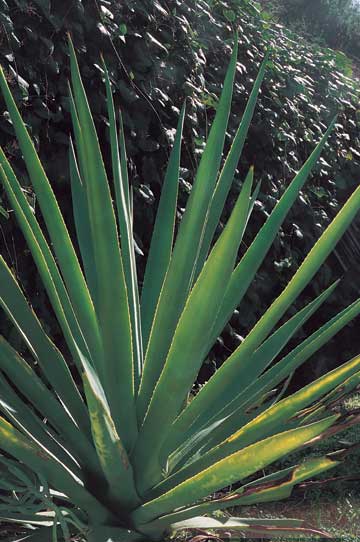This agave is the most wide-ranging of the genus, occurring naturally from northern Mexico (Sonora) all the way to Panama, where a local form was described by Trelease as Agave panamana. The latter, offered here, is native to the barren shore and islets along the Pacific coast of Panama where its small rosettes (2' across) of narrow linear leaves cling to nearly soilless rocks. Clearly the species is tolerant of salt spray and, indeed, its bulbils may be disseminated by ocean currents in the Gulf of Panama (see Tom Cseh’s account of his explorations in Haseltonia, No. 1: 34-44, 1993). Gentry suggests, in Agaves of Continental North America, that this habitat is the only place the plants can survive without being shaded out by the otherwise dominant forest vegetation in more protected situations, though Cseh reveals that it grows—but more laxly—in denser vegetation. The usual barrenness of its native habitat also accounts for the small size of the plant, which under lusher cultivation can produce nicely rounded rosettes to 3' in diameter. Rooted bulbils of HBG 71781, a plant originally collected by Tom Cseh at Monte Oscuro, Panama. $5.

Published in the Cactus and Succulent Journal, Vol. 74 (2), March - April, 2002

